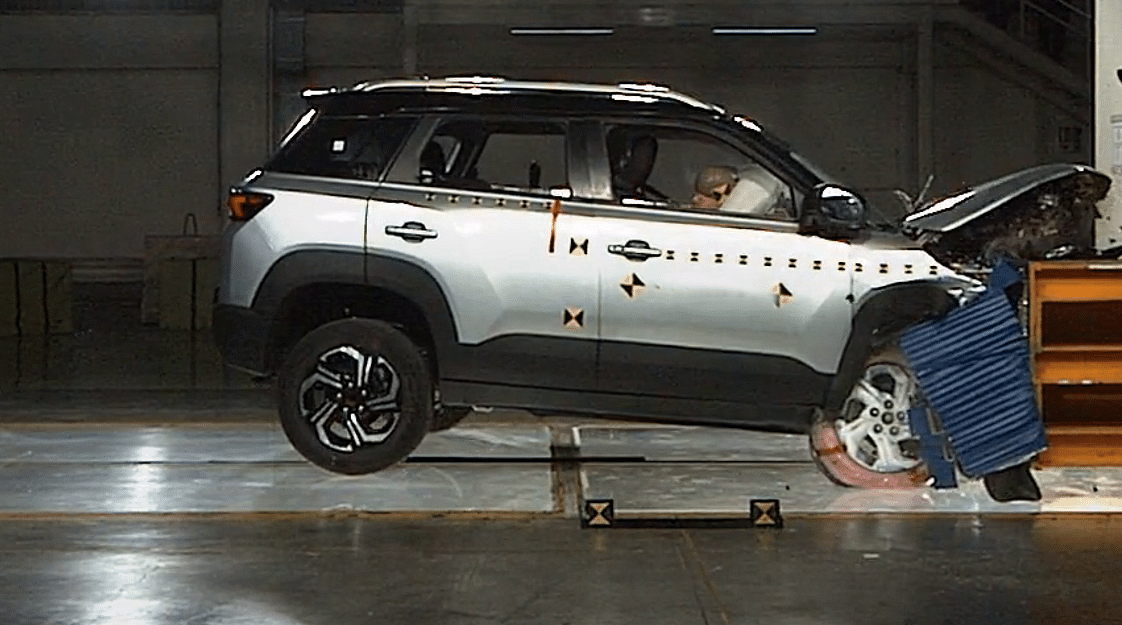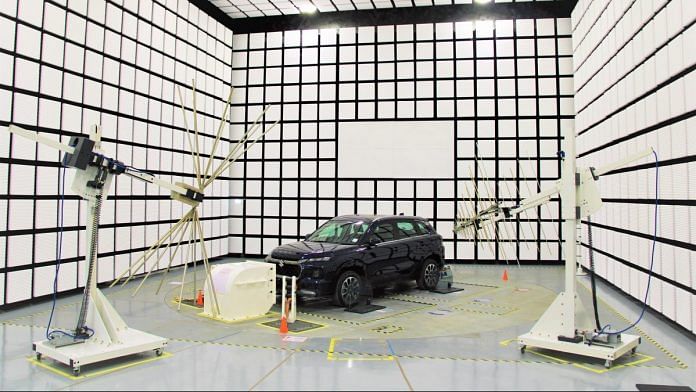Watching a brand-new car being dragged down by a cable at 64 kilometres per hour straight towards a wall is an oddly-mesmerising sight. And then there is the noise when the car strikes the target. Believe me, the movies and television can’t quite capture it. The sound overwhelms the high-speed cameras pointed at the scene of the planned disaster, recording over 10,000 frames every second. These tests are essential for meeting new safety norms such as the proposed Bharat New Car Assessment Program (Bharat NCAP). Every new vehicle that Maruti develops today undergoes as many as 50 crash tests, from the very first prototypes to production vehicles rolling off the line.
What I witnessed at Maruti-Suzuki’s Research and Development centre located over 600 acres in Rohtak, Haryana, was a first for me in India. A brand new Maruti Brezza was crashed only for our benefit. Maruti engineers on the site told us that it was a pre-production model and would need to be scrapped anyway, so they decided to put on a show. And it was not just the crash test. Earlier that day, I had driven the new Grand Vitara SUV on the impressive test-track facilities. But before that, I was witness to some of the fascinating work that Maruti engineers are doing in Rohtak.
Built at a cost of over Rs 4,000 crore (and counting) the labs at Rohtak are used by the country’s largest carmaker to test and validate all their new vehicles. Operational for the last five years, this centre has only grown to over 400 engineers and an army of drivers who work here. The company has also maintained some of the wetlands in the area to make it attractive to birds as well.
Also Read: Hyundai’s new Tucson comes loaded to the gills. Its style and power match the price
Expanding engineering capabilities
Alongside another 1,500 engineers at Maruti’s original factory in Gurugram, the carmaker has taken massive strides in designing, developing and then validating vehicles within India. As CV Raman, executive director, Engineering, Maruti-Suzuki, reminds us—it all began in 2005, when 30 engineers from the Indian company spent a few years in Japan at the headquarters of Maruti’s parent, Suzuki Motor Company, to help develop the first-generation Suzuki Swift and give it more of an Indian feel. Since then, Maruti’s own engineering capabilities have expanded dramatically.
While the company has not yet played the lead role in developing new platforms and engines, they work alongside Suzuki engineers in Japan to do so. But Maruti engineers make refinements to engines and develop new vehicles in India such as the Brezza, both the first and the new second-generation of the car. India-specific developments take place as well, in engine labs where on twenty test-beds, engines are tested continuously for weeks on end, even in special cold and hot weather simulators. Maruti engineers are already working towards the government’s plans to blend up to 20 per cent Ethanol in petrol from 2023.

It is incredible what all is being tested in these labs. Engineers test for ‘BSR’, for example, which stands for ‘Buzz, Squeak and Rattles’. As car cabins become ever quieter, engineers are spending a lot of time eliminating such noises. Extremely sensitive microphones can find sounds even at isolated frequencies, allowing engineers to make component-level improvements to remove any such noises.
In another lab, engineers test the vehicles for electromagnetic resilience and emissions from the car. This has become important nowadays as interference can muddle up not just cellular and satellite signals but also potentially wreak havoc with the tens of microprocessors onboard vehicles. However, across the hall where the highly-sensitive electromagnetic testing was taking place, Maruti was also testing batteries and cells for their first electric car coming in 2024. A battery pack was being put through intense charging and discharging cycles with hundreds of sensors monitoring every aspect of the test.
In another chamber, individual lithium cells were being stress-tested for both heat and cold. These tests have been taking place for a few years already, and while we could not see Maruti’s first electric vehicle, it is clearly being studied intensely at Rohtak.
Also Read: White, green, blue but not orange or purple — How your car finds its colour
Challenges ahead
Designing a car is not an easy process nor is preparing engineers to design cars. Raman, who has been with Maruti-Suzuki since 1985, says that getting talent has been the company’s greatest challenge. “After a few years in India, we send these young boys and girls to Japan for advanced training. It takes six to eight years to develop them into the roles they need to do.” Yet, with a shortage of skilled engineers, particularly in fields like electro-mechanical engineering, attrition has been an issue for Maruti-Suzuki, “attrition is around 5-7 per cent every year.”
With more and more companies enhancing their design and engineering facilities, there is an expectation that there be more fundamental work happening in India. As the world’s third-largest car market after China and the United States, the country could also become a global hub for such work. After all, until a few years ago, all crash tests had to take place abroad, today alongside Maruti-Suzuki, Mahindra and Tata Motors have advanced testing facilities in India. The International Centre for Automotive Technology (ICAT) in Manesar has an advanced test facility as well and the National Automotive Test Tracks (NATRAX) test site near Indore has among the largest test tracks in the world.
It is remarkable just how far India has come in automotive design, from depending on foreign-designed and developed cars to designing our own. Maruti’s facilities at Rohtak could well be the kickstart to something even bigger in a few years, could India become the global hub for electric vehicles? Only time will tell.
@kushanmitra is an automotive journalist based in New Delhi. Views are personal.
(Edited by Srinjoy Dey)






